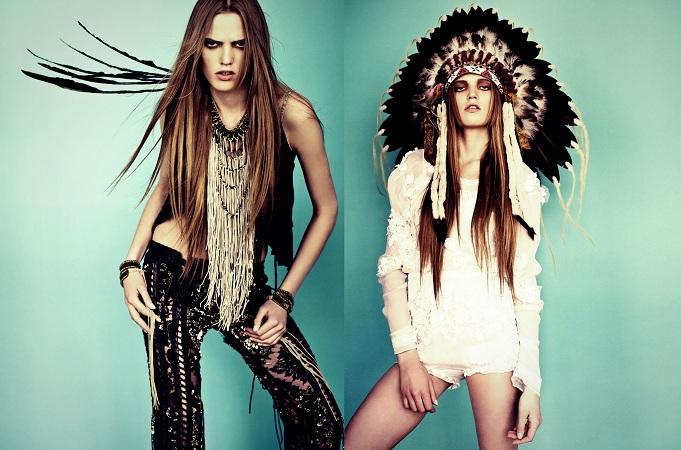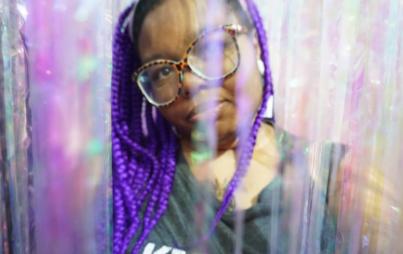
This = not OK (Credit: blog.missesdressy.com)
Whether you wanted to or not, you’ve likely seen Kim Kardashain’s “Break The Internet” cover of Paper mag. You’ve also likely seen links to the articles praising her figure, deriding the photographer, analyzing the way her body was depicted, or begging for some male nudity.
This isn’t the first time, however, that imagery cranked out by the fashion industry establishment has more than missed the mark. The industry has proven particularly tone-deaf in re-creating or exaggerating the visual culture and lived reality of cultures outside the mainstream.
Enclosed herewith are a few examples . . . and their accompanying backlashes.
Headwear Horror:
It was hard to find the worst example of this—so I went with the most foolish-looking one instead. The fashion industry has misused native dress (especially war bonnets) many, many times and this “visual flourish” has trickled down to the masses.
Festival-goers demand their right to prance about in their homemade headresses without thinking twice about the bevy of heinous crimes levelled against indigenous populations. Nor do these music-lovers and fashion consumers seem concerned by the continued fight to be recognized by larger society as a complex set of decidedly separate ethnic groups and practices . . . feathers do not every Indian on the planet make.
The Internet, dare I say it, has helped to broaden the discussion around this form of appropriation with bloggers providing educational resources and supporting offline campaigns.
Dasha Zhukova:
At the start of 2014, Dasha Zhukova, Russian editor-in-chief of Garage magazine, (an art and fashion world multi-hyphenate) was featured in an editorial fashion shoot perched atop a chair very realistically designed to look like a mostly-naked, bound black woman.
But the interwebs took swift revenge. The response to the image was scathing and ubiquitous, due in no small part to Zhukova’s high-profile status and the fact that the image began circulating around MLK Jr. Day (yikes). Claire Sulmners of FashionBombDaily.com hit the nail on the head when she described the portrait as "white dominance and superiority, articulated in a seemingly serene yet overtly degrading way."
New York-based, Russian artist, Alexander Kargaltsev, even went so far as so subvert the disturbing image, providing his own commentary on xenophonia and homophobia (bonus points for intersectionalism).
Chola

The word Chola (and the masculine cholo) has long and fascinating etymology. These loaded five letters (and related words) have evolved from epithets to designators of an alive and well Mexican-American sub-culture. The chola sub-culture is visually distinctive— thinner eyebrows, meticulously applied black eyeliner, darker lined lips, long nails and large hoop earrings (to say nothing of clothing choice).
It’s a compelling, badass, feminine look. It’s also a look with a social history and context that gets ignored when reproduced irresponsibly as it was by Steven Meisel for Italian Vogue in the editorial Haute Mess. To quote the Guardian’s Julianne Escobedo Shepherd, the mainstream arbiters of culture “want to borrow the ‘cool’ of disenfranchised people of colour, but don’t have to face any of the discrimination or marginalisation that accompanies it. The charge against Meisel’s shoot was led online by POC-publications like Ebony and Vibe.
The Good News! While problematic imagery isn’t new (and if the Paper magazine cover is any indication, isn’t going away) the people and cultures it claims to derive inspiration from have one major upper hand: The Internet, the glorious maelstrom that continues to vent, criticize, educate and reify images and ideas that would otherwise languish dangerously unchallenged in pop culture.







